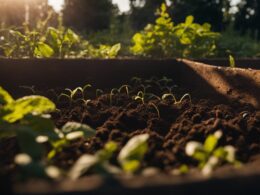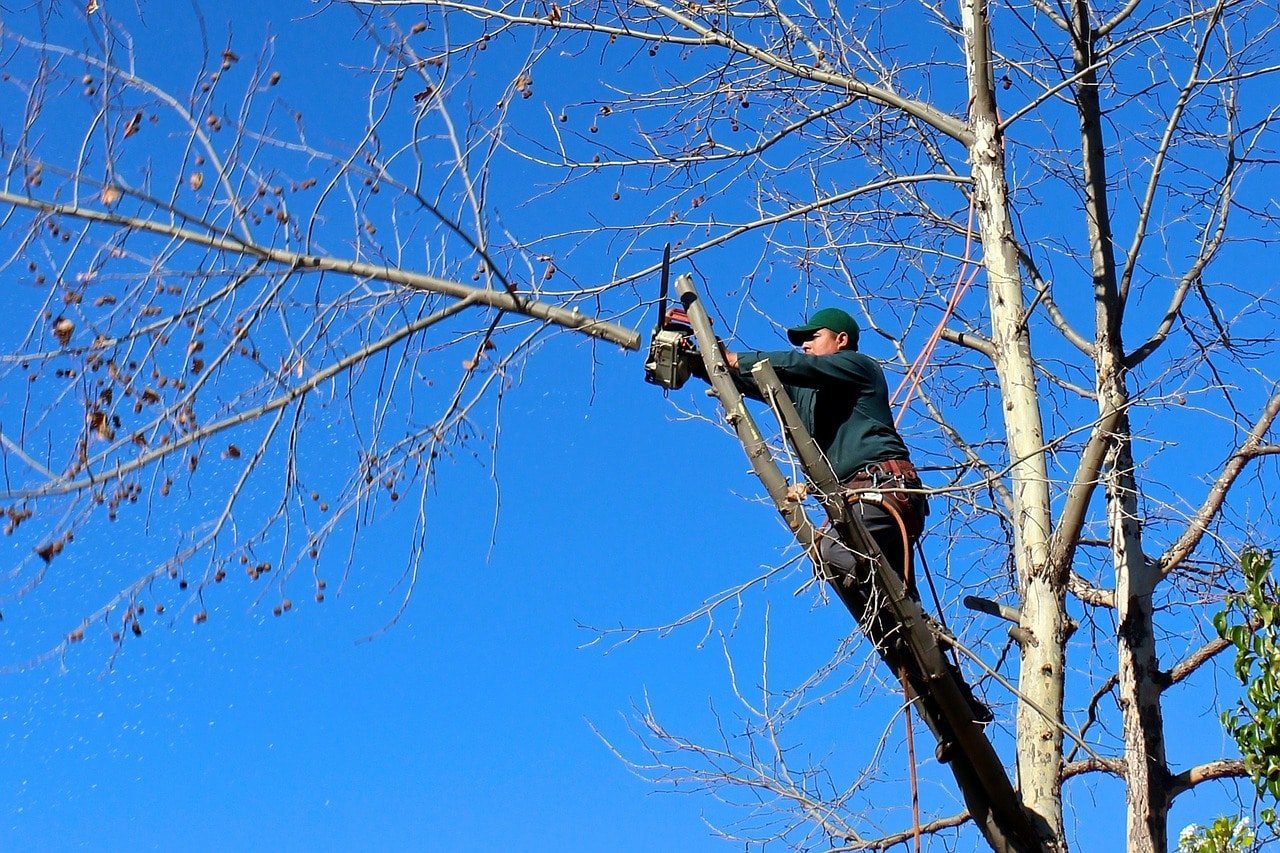Are you wondering how long your potted tomato plants will last? Well, you’ve come to the right place!
In this article, we will explore the factors that can affect the lifespan of potted tomato plants and provide you with tips on how to maximize their longevity. By understanding the signs of an aging tomato plant and learning how to rejuvenate them, you can prolong their lifespan and enjoy a bountiful harvest for years to come.
Additionally, we will discuss common tomato plant diseases and pests, as well as companion plants that can help protect your tomatoes.
So, if you want to ensure the safety and success of your potted tomato plants, keep reading to learn everything you need to know.
Quick Summary
- Proper care and maintenance, including proper watering, fertilization, and pruning, can help maximize the lifespan of potted tomato plants.
- Signs of aging tomato plants include yellowing leaves, reduced fruit production, and weak stems.
- To rejuvenate aging tomato plants, pruning, providing proper nutrition, and consistent watering are important.
- Common tomato plant diseases and pests, such as Early Blight, Late Blight, Tomato Hornworms, Aphids, Blossom End Rot, and Fusarium Wilt, can be prevented and treated with various methods.
Factors Affecting the Lifespan of Potted Tomato Plants
You may be wondering about the factors that can influence the lifespan of your potted tomato plants. It’s important to know that there are several key factors that can affect how long your tomato plants will last and thrive. By understanding and addressing these factors, you can maximize the yield and lifespan of your potted tomato plants.
One of the most important factors is selecting the best tomato varieties for your potted plants. Certain varieties are more suitable for container gardening and have a longer lifespan. Look for compact or dwarf varieties that are specifically bred for container growing. These varieties tend to have shorter growth cycles and are more adaptable to the limited space and resources provided by a pot.
Additionally, proper care and maintenance are crucial for the longevity of your potted tomato plants. Make sure you provide adequate water, sunlight, and nutrients to your plants. Regularly check for pests and diseases and take necessary measures to prevent or treat them. Pruning your tomato plants can also help in maximizing their yield and lifespan.
By considering these factors and taking appropriate actions, you can ensure that your potted tomato plants last as long as possible and produce a bountiful harvest.
Signs of an Aging Tomato Plant
As tomato plants age, they begin to exhibit noticeable signs of decline. It’s important to be aware of these signs so that you can take appropriate action to prolong the lifespan of your potted tomato plant.
Here are three signs of an aging tomato plant:
-
Yellowing leaves: One of the first signs of decline in a tomato plant is the yellowing of its leaves. This can be caused by nutrient deficiencies or diseases. It’s important to address these issues promptly to prevent further decline.
-
Reduced fruit production: As tomato plants age, their ability to produce fruit diminishes. If you notice a significant decrease in the number or size of tomatoes on your plant, it may be a sign that it’s reaching the end of its lifespan.
-
Weak stems: Another sign of an aging tomato plant is weak stems that struggle to support the weight of the plant. This can make the plant more susceptible to damage from wind or heavy rain, leading to further decline.
To rejuvenate an aging tomato plant, you can try various techniques such as pruning, providing proper nutrition, and maintaining consistent watering. These practices can help extend the lifespan of your potted tomato plant and ensure a bountiful harvest. Remember to always monitor your plants closely and take action as soon as you notice any signs of decline.
Tips for Maximizing the Lifespan of Potted Tomato Plants
To maximize the lifespan of your potted tomato plants, there are a few key points to keep in mind.
First, make sure you’re using proper watering and fertilization techniques to provide the necessary nutrients for growth.
Secondly, pruning and supporting the plant will help promote healthy growth and prevent disease.
Lastly, regular inspections and maintenance will allow you to catch any issues early on and take necessary actions to keep your tomato plants thriving.
Proper Watering and Fertilization Techniques
Watering and fertilizing potted tomato plants properly is essential for their longevity and productivity. To ensure your plants thrive, it’s important to follow proper watering and fertilization techniques. Here are some tips to help you achieve success:
| Proper Watering | Fertilization Techniques |
|---|---|
| Water deeply, but infrequently. | Use a balanced fertilizer with equal amounts of nitrogen, phosphorus, and potassium. |
| Allow the soil to dry slightly between waterings. | Avoid over-fertilization, as it can lead to excessive foliage growth at the expense of fruit production. |
| Use a moisture meter or check the soil with your finger to determine when to water. | Apply fertilizer every two to three weeks during the growing season. |
| Water at the base of the plant to avoid wetting the foliage. | Follow package instructions for the appropriate amount of fertilizer to use. |
| Mulch around the base of the plant to help retain moisture. | Water plants thoroughly after applying fertilizer to prevent root burn. |
By following these proper watering and fertilization techniques, you can ensure the health and longevity of your potted tomato plants while maximizing their productivity.
Pruning and Supporting the Plant
Enhance the growth and productivity of your tomato plant by implementing proper pruning and supporting techniques. Pruning is an essential practice that helps maintain the health and structure of your plant. Start by removing any yellow or diseased leaves, as they can attract pests and diseases.
Additionally, prune the suckers, which are the small shoots that grow between the main stem and branches. This will allow the plant to focus its energy on producing larger and more flavorful fruits.
When it comes to supporting your tomato plant, staking is a common method. Use stakes or cages to provide stability and prevent the plant from sprawling on the ground. This not only helps with air circulation but also reduces the risk of disease and rot.
By incorporating these pruning techniques and staking methods, you can ensure a successful and bountiful harvest.
Regular Inspections and Maintenance
Now that you’ve learned how to properly prune and support your potted tomato plant, it’s important to understand the significance of regular inspections and maintenance.
By regularly inspecting the roots of your plant, you can ensure its overall health and longevity. Gently remove the plant from its container and examine the roots for any signs of damage or disease. If you notice any issues, promptly address them to prevent further problems.
Additionally, regular maintenance is crucial in preventing diseases. Clean your tools after each use to avoid spreading any potential pathogens. Keep an eye out for any signs of diseases, such as yellowing leaves or abnormal growth patterns, and take immediate action to prevent the spread.
By consistently inspecting and maintaining your potted tomato plant, you can ensure a safe and thriving garden.
Harvesting and Saving Seeds for Future Planting
To maximize your tomato plant’s lifespan and ensure a bountiful future harvest, learn how to effectively harvest and save seeds. By mastering the art of seed harvesting, you can not only save money but also maintain a continuous supply of delicious tomatoes.
When it comes to harvesting techniques, it’s important to wait until the tomatoes are fully ripe before collecting the seeds. Look for fruits that are plump and have a deep color. Gently squeeze the tomato to check its firmness. Once you’ve selected the perfect tomato, cut it open and scoop out the seeds along with the surrounding gel. Place the seeds and gel in a container and add some water. Allow the mixture to ferment for a few days, stirring it occasionally. This fermentation process helps to remove any substances that may inhibit seed germination.
After the fermentation period, rinse the seeds thoroughly and spread them out to dry on a paper towel. Make sure they are completely dry before storing them. Store the seeds in a cool, dry place in airtight containers such as glass jars or envelopes. Remember to label each container with the tomato variety and the date of collection. This will help you keep track of the seeds and ensure that you use the oldest ones first.
With proper harvesting techniques and seed storage, you can enjoy a continuous cycle of fresh tomatoes year after year. Happy harvesting!
Common Tomato Plant Diseases and Pests
In this next section, we’ll discuss common tomato plant diseases and pests that you may encounter.
These include Early Blight and Late Blight, which are fungal diseases that can cause wilting and rotting of the plant.
You may also come across Tomato Hornworms and Aphids, which are insects that can damage the leaves and fruits of your tomato plants.
Lastly, Blossom End Rot and Fusarium Wilt are two more diseases that can lead to fruit rot and wilting.
Early Blight and Late Blight
Imagine growing your own juicy, flavorful tomatoes in a pot, but did you know that early blight and late blight can significantly impact the lifespan of your potted tomato plants? It’s crucial to take preventive measures to avoid early blight.
Start by planting disease-resistant tomato varieties and ensuring proper air circulation between plants. Avoid overhead watering, as it can splash fungus spores onto the leaves. Instead, water at the base of the plant. Mulching can also help prevent the spread of early blight.
Late blight, on the other hand, requires immediate treatment if detected. Remove infected leaves and destroy them to prevent further spread. Apply fungicides specifically designed for late blight treatment, following the instructions carefully.
Regularly inspect your plants for any signs of these blights and take action promptly to keep your potted tomato plants healthy and productive.
Tomato Hornworms and Aphids
Get ready to tackle tomato hornworms and aphids head-on if you want to keep those juicy tomatoes thriving in your pot. These pests can wreak havoc on your plants, but with the right strategies, you can protect your precious crop.
Here are some tips to control tomato hornworms and repel aphids naturally:
-
Handpick tomato hornworms: Inspect your plants regularly and remove any worms you find by hand. Wear gloves to protect your hands.
-
Attract beneficial insects: Plant flowers like marigolds, daisies, and lavender near your tomato plants to attract insects like ladybugs and lacewings that feed on aphids.
-
Use neem oil: Spray neem oil on your tomato plants to repel aphids. Follow the instructions on the product label for safe and effective use.
-
Companion planting: Grow companion plants like basil, mint, and garlic alongside your tomatoes to deter aphids.
-
Reflective mulch: Place reflective mulch around your tomato plants to confuse and deter aphids.
By implementing these strategies, you can keep your potted tomato plants healthy and pest-free, ensuring a bountiful harvest of delicious tomatoes.
Blossom End Rot and Fusarium Wilt
To avoid the disappointment of blossom end rot and the devastation of fusarium wilt, you’ll need to take proactive measures to protect your thriving tomato crop.
Blossom end rot is a common disorder that causes black, sunken spots on the bottom of your tomatoes. To prevent this, make sure your plants receive consistent watering and avoid over-fertilization. Adding calcium to the soil can also help strengthen the cell walls of the tomatoes.
Fusarium wilt, on the other hand, is a fungal disease that affects the plant’s vascular system, causing wilting and yellowing of the leaves. If your plants are infected, remove and destroy them immediately to prevent the spread of the disease. To treat the soil, consider using fungicides or resistant tomato varieties.
By following these precautions, you can safeguard your tomato plants and enjoy a bountiful harvest.
What Is the Lifespan of Potted Tulips Compared to Potted Tomato Plants?
The potted tulip lifespan is typically shorter than that of potted tomato plants. The vibrant tulip flowers usually bloom for about one to three weeks before withering. In contrast, potted tomato plants can live for several months, producing a harvest of fresh tomatoes. These differences make tomato plants a preferred choice for those seeking a longer-lasting potted plant.
Companion Plants for Potted Tomato Plants
If you’re looking to maximize the health and productivity of your potted tomato plants, consider companion planting with basil and marigold. These two plants not only repel pests but also enhance the flavor of tomatoes.
Another great combination is nasturtium and borage, which attract beneficial insects and deter harmful ones.
Lastly, chives and garlic provide natural pest control and can help ward off diseases, making them ideal companions for your potted tomato plants.
Basil and Marigold
Planting basil and marigold alongside your tomato plants won’t only enhance their growth but also create a vibrant and aromatic garden that’ll make you feel joyful and proud.
When it comes to basil, it’s important to choose a sunny spot for planting and make sure the soil’s well-drained. Trim the top leaves to encourage bushier growth and pinch off any flowers to prevent them from going to seed. Basil’s strong scent can repel pests that might harm your tomatoes, keeping your plants safe.
As for marigolds, they provide numerous benefits. Their bright flowers attract pollinators, which can increase tomato production. Marigolds also release a strong scent that repels harmful insects, acting as a natural pest control.
By incorporating basil and marigold into your potted tomato garden, you can create a safe and thriving environment for your plants.
Nasturtium and Borage
Add nasturtium and borage to your garden for a burst of vibrant colors and an enchanting display of flowers that will attract beneficial insects. Nasturtium is not only beautiful but also offers several benefits. Its bright orange and yellow flowers will liven up your garden, while its leaves can be used in salads, adding a peppery flavor. Nasturtium also acts as a natural pest repellent, keeping harmful insects away from your other plants. On the other hand, borage is known for its medicinal uses. The blue, star-shaped flowers can be used to make a soothing tea that promotes relaxation and relieves stress. Borage is also rich in essential fatty acids, which are beneficial for heart health. By including nasturtium and borage in your garden, you’ll create a safe and inviting space filled with colorful blooms and health benefits.
| Nasturtium Benefits | Borage Uses | |||
|---|---|---|---|---|
| Vibrant colors | Medicinal purposes | |||
| Attracts beneficial insects | Soothing tea | |||
| Natural pest repellent | Heart health | |||
| Edible leaves | Essential fatty acids | Nasturtium Benefits | Borage Uses | |
| ———————- | —————— | |||
| Vibrant colors | Medicinal purposes | |||
| Attracts beneficial insects | Soothing tea | |||
| Natural pest repellent | Heart health | |||
| Edible leaves | Essential fatty acids | |||
| Rich in antioxidants | Boosts immune system |
Chives and Garlic
Chives and garlic bring a delightful burst of flavor to your garden, making every meal a culinary adventure. These herbs not only enhance the taste of your dishes but also offer numerous health benefits. When it comes to planting chives and garlic, here are three key techniques to ensure success:
-
Choose a sunny spot: Chives and garlic thrive in full sunlight, so pick a location in your garden that receives at least six hours of direct sunlight each day.
-
Well-drained soil: These herbs prefer well-drained soil to prevent waterlogging, which can lead to root rot. Ensure the soil is rich in organic matter and has good drainage.
-
Proper spacing: Give your chives and garlic enough room to grow by planting them about 6-8 inches apart. This allows for proper airflow and reduces the risk of diseases.
By following these planting techniques, you can enjoy a bountiful harvest of chives and garlic while ensuring the safety of your garden.
Rejuvenating Aging Tomato Plants
To give your aging tomato plants a new lease on life, you can breathe new energy into them by simply giving them a little extra TLC. Rejuvenating techniques can work wonders in improving plant health and ensuring a bountiful harvest. Here are a few tips to help you revive your tired tomato plants.
Firstly, start by pruning. Remove any yellow or diseased leaves, as well as any suckers that’re stealing energy from the main plant. This’ll allow your tomato plant to focus its energy on producing new growth and fruit.
Next, provide adequate support. Tomato plants can become heavy when laden with fruit, so make sure they’ve a sturdy cage or trellis to lean on. This’ll prevent the plant from collapsing and reduce the risk of disease.
Watering is crucial for rejuvenating aging tomato plants. Ensure they receive consistent moisture, but be careful not to overwater. Overwatering can lead to root rot and other fungal diseases. Mulching around the base of the plant can help retain moisture and regulate soil temperature.
Additionally, apply a balanced fertilizer to replenish essential nutrients. This’ll give your plants the boost they need to thrive and produce healthy, flavorful tomatoes.
By following these rejuvenating techniques and improving plant health, you can revive your aging tomato plants and enjoy a bountiful harvest. Remember to give them the care and attention they deserve, and they’ll reward you with delicious homegrown tomatoes.
When to Start Over with New Tomato Plants
If you’ve tried everything to rejuvenate your aging tomato plants and they still aren’t thriving, it may be time to start over with new ones. Starting fresh can be a great way to ensure success in your tomato growing endeavors.
When considering replanting strategies, there are a few key factors to keep in mind. First, it’s important to choose the right time to start over. Generally, it’s best to replant tomato plants in the spring when the weather is warm and frost is no longer a concern. This will give your new plants the best chance to establish themselves and grow strong.
Next, consider the location for your new tomato plants. Choose a spot that receives adequate sunlight and has well-draining soil. Avoid areas with excessive shade or where water tends to pool, as this can lead to disease and poor growth.
Think about the variety of tomato plants you want to replant. Consider factors such as taste, disease resistance, and growth habit. There are many different types of tomatoes available, so choose ones that suit your preferences and growing conditions.
By starting fresh and implementing these replanting strategies, you can increase your chances of success and enjoy a bountiful harvest of delicious tomatoes. Happy gardening!
Frequently Asked Questions
Can potted tomato plants be grown indoors?
Yes, potted tomato plants can be grown indoors. It’s a great option for growing tomatoes in small spaces and offers the benefits of indoor gardening, such as control over pests and weather conditions.
How often should potted tomato plants be watered?
To determine when to water your potted tomato plants, check the soil moisture by sticking your finger about an inch deep. If it feels dry, water the plant. To prevent overwatering, make sure the pot has drainage holes and avoid watering too frequently.
What is the best type of soil to use for potted tomato plants?
The best type of soil for potted tomato plants is a well-draining mix, enriched with organic matter like compost. Using compost not only provides essential nutrients but also improves soil structure, promoting healthy growth and preventing waterlogged conditions.
Can potted tomato plants be grown in hanging baskets?
To grow potted tomato plants in hanging baskets, you can enjoy advantages like saving space and preventing pests. Ensure success by using a well-draining potting mix, watering regularly, and providing adequate sunlight and support for the plants.
Are there any specific pruning techniques for potted tomato plants?
To ensure the safety of your potted tomato plants, it’s important to use proper pruning techniques. The best time to prune is in the morning when the plants are hydrated.
Conclusion
So, now you know how long potted tomato plants can last and what factors can affect their lifespan. By paying attention to signs of aging and practicing proper care, you can maximize the lifespan of your tomato plants.
Harvesting and saving seeds for future planting is a great way to continue the cycle. Remember to watch out for common diseases and pests and consider companion plants to support your tomato plants.
And if your plants do start to decline, don’t be afraid to rejuvenate or start over with new plants. Happy gardening!









